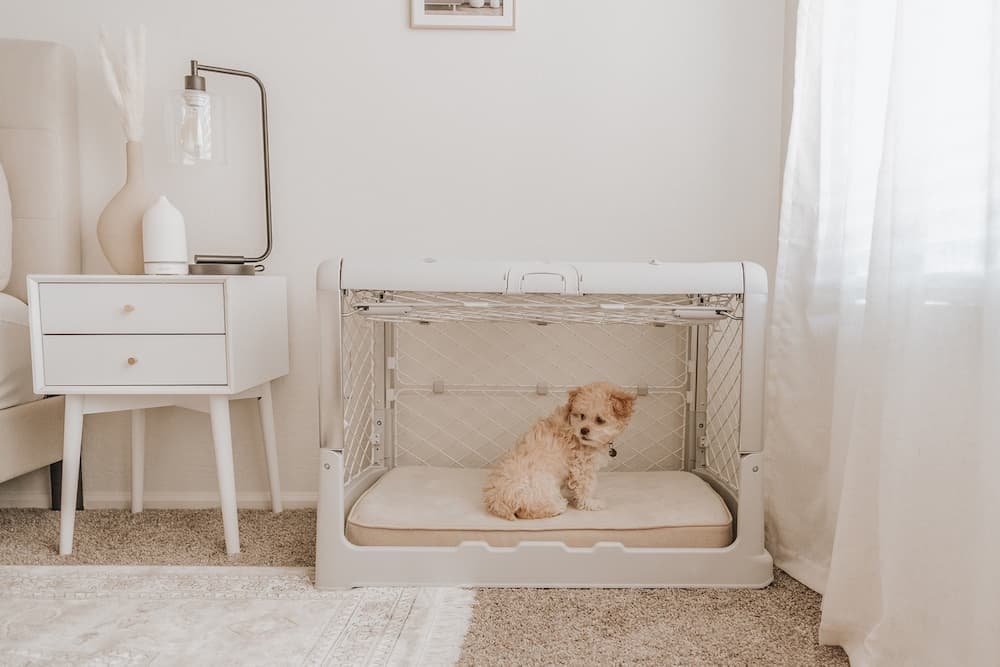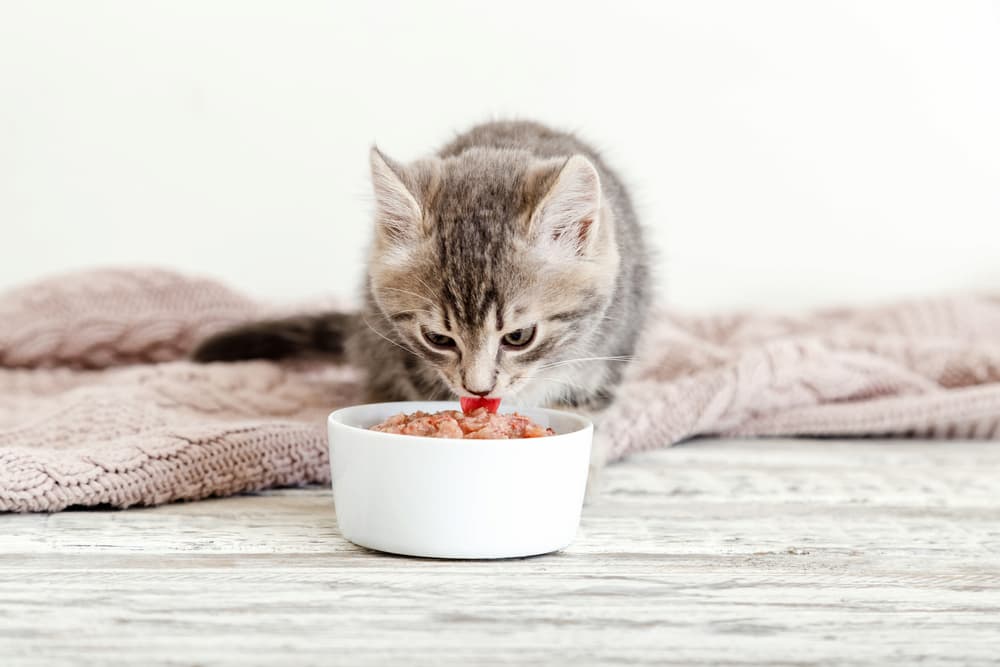Dog Modeling: Does Your Pup Have What It Takes?


Polished, well-styled dog photos are everywhere these days. You see them in ads for major pet retailers, on brand packaging for dog foods and toys, and as you’re scrolling through influencer posts on Instagram. Dog modeling is a big business and a claim to fame for both pure breeds and lovable mutts alike.
Have you ever wondered if your dog has what it takes to strike a pose and hit it big? Or, at the very least, get some free dog treats?
We asked pet photographers, dog talent scouts, and parents of some famous canine influencers to give us the scoop on how pets can break into dog modeling and tips for how to improve your canine photo game at home.
Dog Modeling: How to Get Started
Let’s face it—every pet parent enjoys taking photos of their canine companions. And whether you simply want to up your dog’s Instagram game or figure out how to get your dog in campaigns for major pet brands, you have to start somewhere.
“Try and start from a place that feels natural,” says Matt Wolf, a professional screenwriter and publicist who runs the Instagram account for his dog Norman the Pomsky, a dog influencer with over 100,000 followers. “Have fun taking photos and discovering your pet’s personality and voice. What makes him or her stand out from other pet influencers?”
Wolf says that sometimes catching a break and building a large following just takes a little bit of luck. He and his wife, Rachel, simply started posting photos of Norman when he was a few months old. A writer at HelloGiggles discovered Norman’s account and wrote a post about the adorable dog. “The story got picked up by Yahoo! News and Huffington Post, and things took off from there,” he adds.
But to try to help your dog’s modeling or influencer career catch fire, there are a few things you can do at home to get started.
Begin With Training
“If you really want your dog to model, train your dog to be calm in new environments,” says Karen Hoglund, a Denver-based pet photographer. “If you’re training a puppy, socialize them in many settings, including a photographer’s studio.”
Paula Stewart, director of The Animal Talent, a casting agency supplying ethically trained animals to film, television, and creative media productions, agrees that the right training is essential for dogs who want to work with brands or for pet parents who want to get the perfect at-home shots.
“Training is an integral part of your bonding process and it absolutely should be fun,” she says.
Get Your Dog Comfortable in Different Settings
Canines who succeed at dog modeling are comfortable in plenty of different environments. A dog that gets distracted easily won’t pose for photos or be able to handle a few hours on set for a shoot.
“Your dog needs to have an even temperament in a lot of different situations,” says Hoglund. “They can’t be too shy or too wild. They shouldn’t come unglued if they see a squirrel or a bunny.”
Again, exposing your dog to different situations and locations during your training will help to get him or her comfortable in new environments with new people.
“To increase your dog’s confidence, practice your training in different settings,” says Stewart. “Indoors and outdoors, rural and urban areas, with flash photography and without flash photography.”
Identify Your Target Audience
Before you even start taking photos, think about the people you’re trying to reach and create content specifically for them.
“My advice to those that want to get into dog modeling or become a pet influencer is to really know who your audience is. Who are the people you want to meet and connect with in real life?” says Hannah Zulueta, a social media manager and dog mom behind the popular pet Instagram account Maggie Loves Orbit. “Having a mission bigger than just getting famous is what carries you and propels your story forward.”
Don’t Get Frustrated
Not every dog is cut out for dog modeling or constant Instagram updates. So it’s important to take things at your dog’s pace and never to force them to do something they aren’t comfortable with.
“If your dog isn’t happy, leave him alone,” says Stewart. “Never force your dog into training or working on set when they are not happy and confident.”
Set Ups and Poses for Dog Modeling Success
If you do want your dog to model, you’ll have to invest in some gear and practice your dog’s best poses and action shots. Here are some pointers from the pros.
Photography Gear and Apps
While pet photography equipment can range from a basic smartphone to an elaborate digital camera, simply invest in what is comfortable for you. Getting started doesn’t have to cost a ton of money.
“Focus on producing high-quality content, which doesn’t have to cost much,” says Wolf. “All you need is a decent camera or phone camera, and good lighting.”
You can edit your photos with free or paid apps for your phone or desktop such as Adobe Lightroom or PicTapGo. These apps allow you to filter your photos or make manual adjustments to get the look you want.
Props and Styling
Creating an environment or a visual story can be a lot of fun for pet photos, so feel free to play around with props and backdrops as long as your dog is comfortable with them.
Instead of relying on your dog to wear a costume or some kind of prop for the shoot, think about what you can do to alter the environment and train your dog to pose with different objects.
While some dogs will tolerate clothing or accessories, Hoglund explains that sometimes less is more. “Don’t torture your sweet dog by dressing them up,” she says. “Avoid hats because most dogs hate them. A simple, clean collar usually works much better.”
Be Original and Authentic
Although there is plenty of inspiration for pet photography online, it’s important to take an original approach to try to get your dog noticed and stand out from the crowd.
“It’s better, in the long run, to come up with your own ideas than to copy something you saw on Instagram,” says Hoglund. “It’s tempting to do seasonal photos for every minor holiday, but if that’s all you do, you’ll be just like everyone else. Think about what makes your dog special and concentrate on that.”
Zulueta agrees that the people who put more of themselves and their dog’s personality out online develop stronger connections and build bigger followings “I firmly believe that there is an audience for every single person. But most people play it safe,” she says. “They don’t share the authentic parts of themselves. They show a very one dimensional life. Once you learn to be more comfortable in sharing what makes your life with your dog interesting, then I think that’s when the magic happens.”
Don’t Forget the Video
While you may be keen to take still images of your dog, don’t forget to focus on videos that show your dog in action, too. Not only can videos be a great way to engage an audience through Youtube or Reels and IGTV videos on Instagram, but casting directors and talent scouts often look for videos that showcase a dog’s personality when booking.
“The first thing a producer asks me for is a video of the dog in action,” says Stewart. “They want to see the movements and motions of the dog and they want to view the dog’s abilities before they make a booking for a shoot.”
Engagement and Building Your Dog’s Network
Once you have a portfolio of photos and videos that show off your dog’s looks and personality, engaging online and reaching out to brands or agencies can help you get a foot in the door.
Here are some of the things to focus on when building your dog’s network.
Do Your Research
Wolf says that it doesn’t hurt to begin researching pet influencer and talent agencies to figure out which may be a good fit for your own dog. Gather contact information and have it ready to go once you feel like you’ve built a strong following and portfolio for your canine star.
Read up on other success stories and how other pets found success to gain some ideas for how to interact, network, and grow.
Spend Time on Engagement
“Social media is and always will be about one-on-one interactions. Growth happens when you can do this at scale,” says Zulueta. “When your account is very small, you’re able to connect with your audience more easily. But it becomes more challenging the larger your audience becomes.”
Dedicate time to respond to comments, follow people or pets back, and answer questions. However, make sure you keep this time structured and reasonable. “I think the mistake people make is they spend hours on Instagram but forget to live a life,” says Zulueta.
Ultimately, your dog’s engagement rate is something that brands will consider when booking them for a shoot or reaching out to them to be part of an influencer campaign. “Engagement is important because anyone can have a certain number of followers—the majority of which may not be ones who actually engage with the content,” says Wolf. “Brands and companies want people to engage with them, so they can gain insight into how they think and feel.”
Connect With People Offline
Once you’ve created content and built your audience through engagement, you can begin contacting agencies, brands, or dog talent scouts to start conversations about how to get your pet involved in dog modeling or promotional opportunities.
“Once you have created some decent content, run it by people whose opinions you trust,” says Wolf. “If the feedback is good, begin reaching out to pet agencies that might be a fit.”
And don’t be afraid to take the conversation offline or outside of social media platforms.
“It was our offline, face-to-face relationships that launched our growth,” says Zulueta. “That’s when our account started to take off.”
Dog Modeling: Be Realistic With Expectations
Even if your pet has that special something that makes them shine in front of the camera, don’t expect your dog to get rich and famous from a dog modeling career.
“I don’t want to get anyone’s hopes up thinking that it’s common for dogs to be paid to be models,” says Hoglund. “Realistically, most business owners want to use their own dogs for their company’s photoshoots. They also like to save money by using their friends and family’s dogs.”
Additionally, getting your dog noticed by brands or agencies may take a lot of time and patience, so don’t expect everything to blow up overnight.
“You may have to build a certain level of fan base before being considered for representation,” says Wolf. “This can take some time to do organically, so be patient and keep at it!”
Lastly, never force your dog to model or pose for photos if it makes them uncomfortable or your dog isn’t having fun. “If your dog isn’t happy, leave him alone,” says Stewart. “Only ever use positive, reward-based training, whether you’re on set or at home.”
Like it, love it, want some more of it? Be sure to check out our article on top products to help your dog survive this crazy year!












